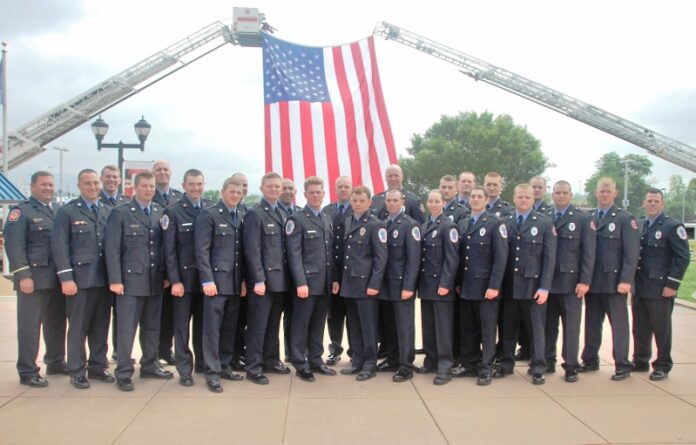 The Roanoke Valley Regional Fire & EMS Academy #19, consisting of 22 personnel representing the Cities of Roanoke and Salem, and Roanoke County, graduated earlier today at the Berglund Center, Performing Arts Theatre. Each recruit was called to the stage and pinned with their official firefighter badge as their families watched.
The Roanoke Valley Regional Fire & EMS Academy #19, consisting of 22 personnel representing the Cities of Roanoke and Salem, and Roanoke County, graduated earlier today at the Berglund Center, Performing Arts Theatre. Each recruit was called to the stage and pinned with their official firefighter badge as their families watched.
Nine individuals representing Roanoke Fire-EMS, twelve individuals representing Roanoke County Fire & Rescue and one from Salem Fire-EMS spent 20 weeks and nearly 1000 hours receiving instruction and practical training in the areas of basic firefighting skills and emergency medical service (EMS) instruction. The fire training included: building construction, forcible entry, ventilation, search and rescue, and hazardous material operations, to name a few.
The EMS training included: basic anatomy and physiology, medical trauma assessments, diabetic difficulties, cardiac, respiratory, heat and cold emergencies, the use of a variety of medical equipment, and the importance of patient rights. The Academy ended with a live-burn at the Roanoke Valley Regional Fire & EMS Training Center (RVRTC) where recruits were able to test their practical skills. Most of the training was completed at the RVRTC located on Kessler Mill Road in Roanoke County.
The graduates received their station assignments immediately following the ceremony; some will start their first shift immediately.
Bringing the fire and EMS departments together to learn, train, and grow provides consistency among all firefighter/EMS personnel—whether stationed in City of Roanoke, Roanoke County or City of Salem— and minimizes costs to each jurisdiction through shared instructors and equipment.
The Roanoke Valley Regional Fire & EMS Training Center is a partnership between Roanoke County, the City of Roanoke, the City of Salem, and the Town of Vinton, a continuing effort to enhance fire and EMS safety operations and to improve the delivery of these critical services through better training. It creates a system that allows for each area to have access to a state-of-the-art facility, as well as the sharing of resources to include specialized instructors and equipment, resulting in greater productivity region-wide.


